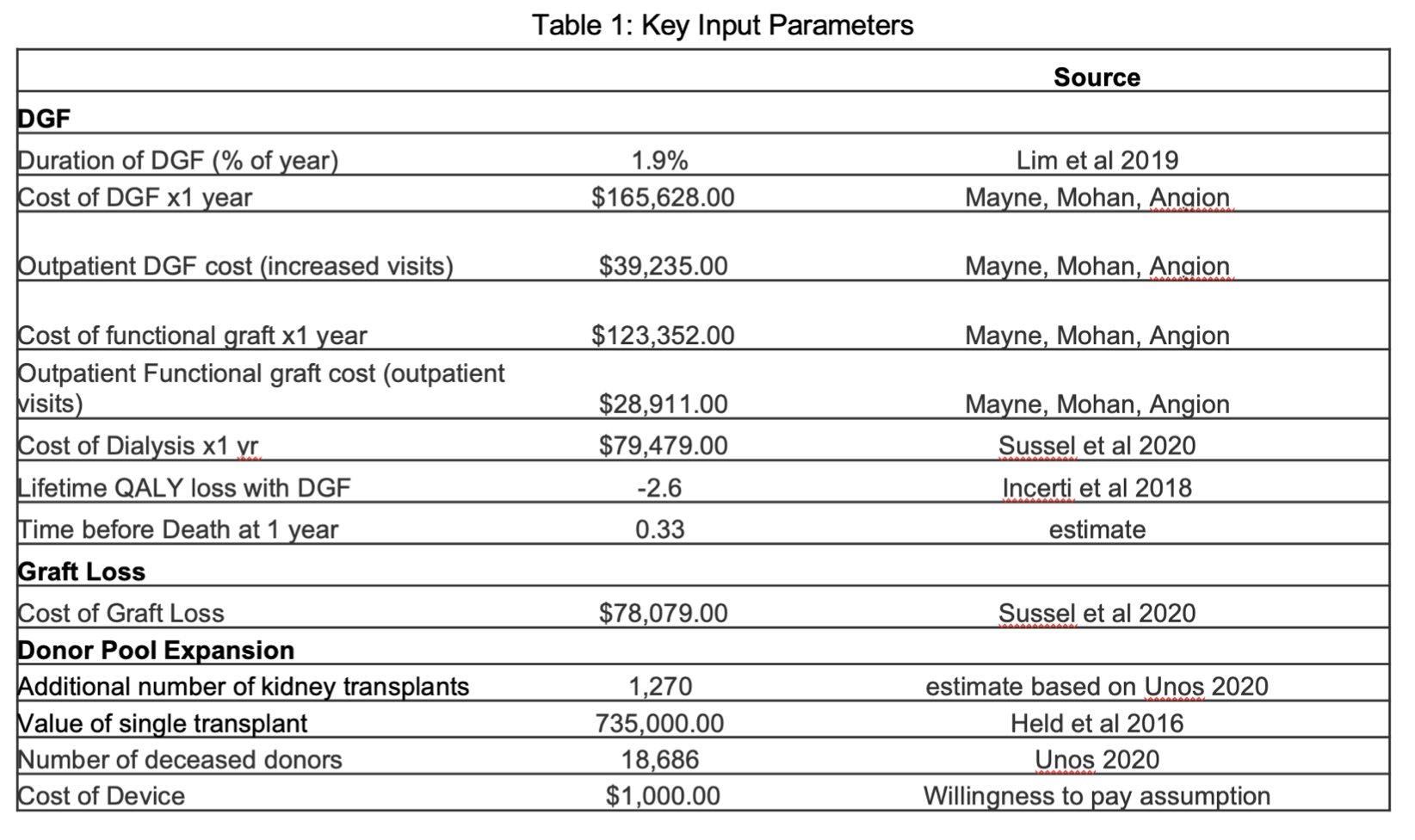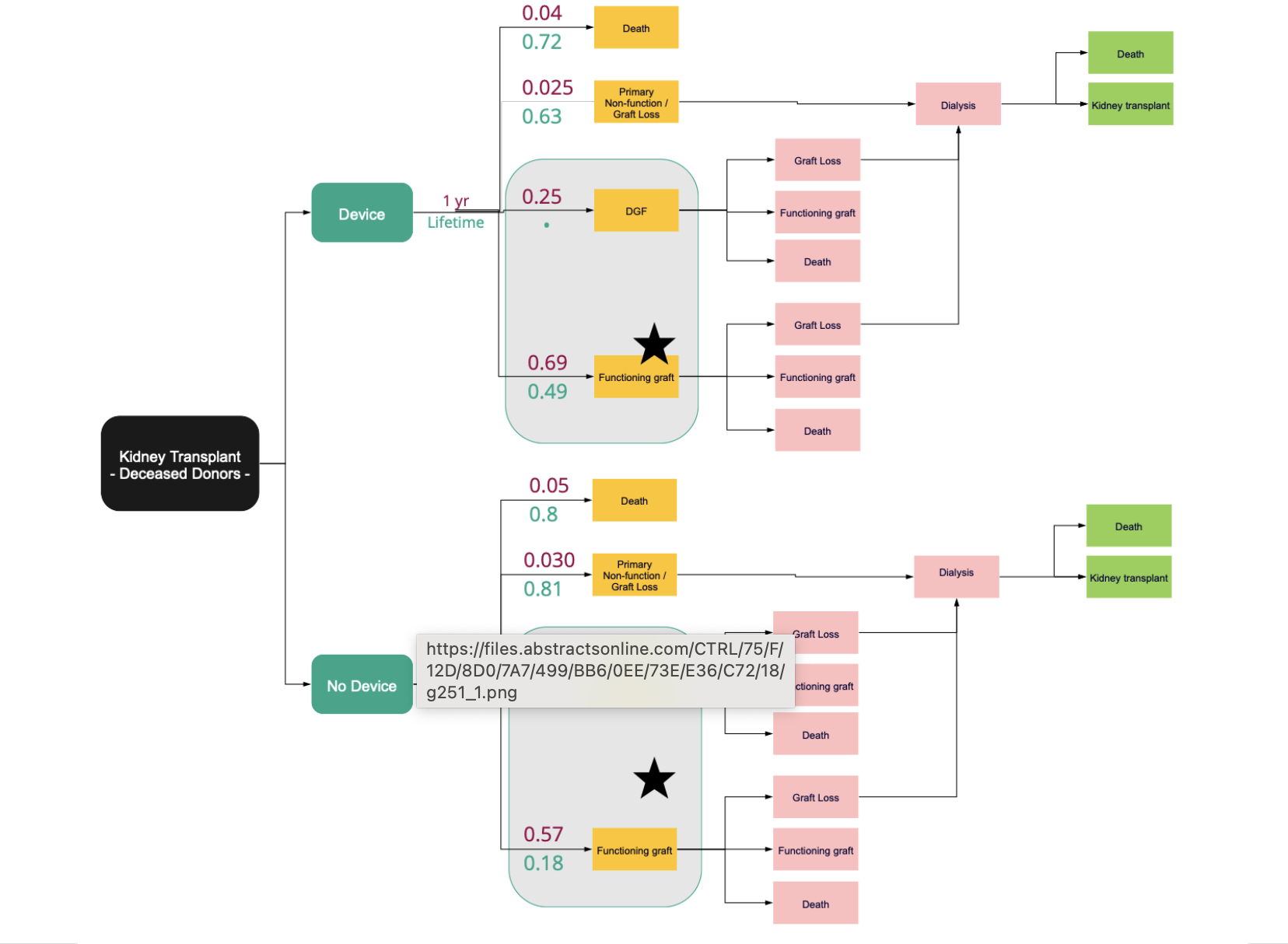Cost-Effectiveness of an Intra-Operative Renal Allograft Cooling Device
K. Hansen1, C. Yock2, J. Pietzsch2
1University of California, San Francisco, San Francisco, CA, 2Stanford, Palo Alto, CA
Meeting: 2022 American Transplant Congress
Abstract number: 1596
Keywords: Economics, Ischemia, Kidney, Post-operative complications
Topic: Clinical Science » Ethics » 23 - Non-Organ Specific: Economics & Ethics
Session Information
Session Name: Psychosocial and Treatment Adherence
Session Type: Poster Abstract
Date: Tuesday, June 7, 2022
Session Time: 7:00pm-8:00pm
 Presentation Time: 7:00pm-8:00pm
Presentation Time: 7:00pm-8:00pm
Location: Hynes Halls C & D
*Purpose: Existing literature shows intra-operative cooling of a renal allograft during anastomosis reduces the incidence of delayed graft function in deceased donor kidney transplant recipients from a baseline rate of 35% to 25%, 5-year graft loss from 23% to 16%, and increases the number of transplantable kidneys from 18,686 to 19,479. Cost effectiveness of an organ cooling device was evaluated with a Markov Model.
*Methods: A state-transition model was used to predict the effect of intra-operative cooling and standard of care on 1-year and lifetime probabilities of having a functioning graft, delayed graft function, graft loss with return to dialysis, and death. We adopted a societal perspective and estimated an incremental-cost-effectiveness ratio in U.S. dollars per quality adjusted life year (QALY).
*Results: Intra-operative allograft cooling of deceased donor kidneys provides a 0.01 QALY improvement and $4,800 in savings per patient at 1-year, and over a lifetime, provides 0.26 QALYs and $12,200 in savings per patient. In both the 1-year and lifetime estimates, the ICER is dominant with the cooling device. The total cost savings, not including QALY gains to the system in this group, is $228 million. Including cost savings of the projected increase in organ utilization resulted in $1.18 billion in savings over the lifetime of an annual cohort of transplant recipients. The 95% credible interval for ICER was cost-saving to $39,000 per quality adjusted life year.
*Conclusions: The model suggests that intra-operative cooling of a deceased donor renal allograft with the device, over a wide range of assumptions, is a cost effective strategy for transplantation that might result in significant cost savings and lower morbidity and mortality.
To cite this abstract in AMA style:
Hansen K, Yock C, Pietzsch J. Cost-Effectiveness of an Intra-Operative Renal Allograft Cooling Device [abstract]. Am J Transplant. 2022; 22 (suppl 3). https://atcmeetingabstracts.com/abstract/cost-effectiveness-of-an-intra-operative-renal-allograft-cooling-device/. Accessed December 19, 2025.« Back to 2022 American Transplant Congress


